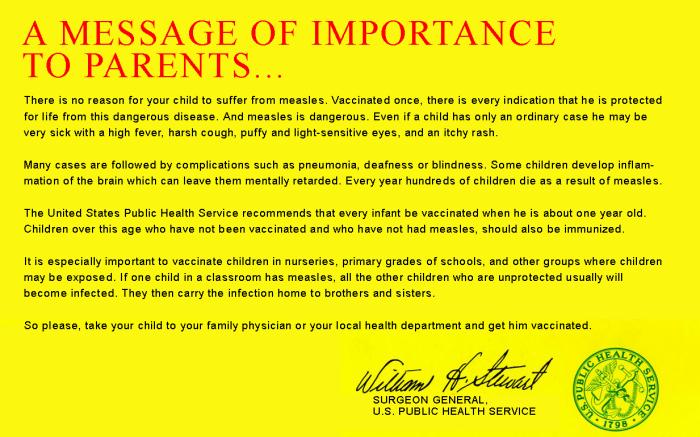Rubella historical perspective: Difference between revisions
| Line 4: | Line 4: | ||
==Historical Perspective== | ==Historical Perspective== | ||
*1814, George Maton, first recognized that a mild illness characterized by rash, adenopathy, and little or no fever.<ref name="pmid3890105">{{cite journal| author=Cooper LZ| title=The history and medical consequences of rubella. | journal=Rev Infect Dis | year= 1985 | volume= 7 Suppl 1 | issue= | pages= S2-10 | pmid=3890105 | doi= | pmc= | url=https://www.ncbi.nlm.nih.gov/entrez/eutils/elink.fcgi?dbfrom=pubmed&tool=sumsearch.org/cite&retmode=ref&cmd=prlinks&id=3890105 }} </ref> | |||
*In 1866, Henry Veale named the disease rubella.<ref name="pmid3890105">{{cite journal| author=Cooper LZ| title=The history and medical consequences of rubella. | journal=Rev Infect Dis | year= 1985 | volume= 7 Suppl 1 | issue= | pages= S2-10 | pmid=3890105 | doi= | pmc= | url=https://www.ncbi.nlm.nih.gov/entrez/eutils/elink.fcgi?dbfrom=pubmed&tool=sumsearch.org/cite&retmode=ref&cmd=prlinks&id=3890105 }} </ref> | |||
*In 1942, Norman Gregg reported the birth defects in a pregnant woman infected with rubella in the first trimester.<ref name="pmid3890105">{{cite journal| author=Cooper LZ| title=The history and medical consequences of rubella. | journal=Rev Infect Dis | year= 1985 | volume= 7 Suppl 1 | issue= | pages= S2-10 | pmid=3890105 | doi= | pmc= | url=https://www.ncbi.nlm.nih.gov/entrez/eutils/elink.fcgi?dbfrom=pubmed&tool=sumsearch.org/cite&retmode=ref&cmd=prlinks&id=3890105 }} </ref> | |||
*Rubella is also known as German measles because the disease was first described by German physicians in the mid-eighteenth century.<ref name="pmid3535122">{{cite journal| author=Horstmann DM| title=The rubella story, 1881-1985. | journal=S Afr Med J | year= 1986 | volume= Suppl | issue= | pages= 60-3 | pmid=3535122 | doi= | pmc= | url=https://www.ncbi.nlm.nih.gov/entrez/eutils/elink.fcgi?dbfrom=pubmed&tool=sumsearch.org/cite&retmode=ref&cmd=prlinks&id=3535122 }} </ref> | *Rubella is also known as German measles because the disease was first described by German physicians in the mid-eighteenth century.<ref name="pmid3535122">{{cite journal| author=Horstmann DM| title=The rubella story, 1881-1985. | journal=S Afr Med J | year= 1986 | volume= Suppl | issue= | pages= 60-3 | pmid=3535122 | doi= | pmc= | url=https://www.ncbi.nlm.nih.gov/entrez/eutils/elink.fcgi?dbfrom=pubmed&tool=sumsearch.org/cite&retmode=ref&cmd=prlinks&id=3535122 }} </ref> | ||
*In 1962, rubella virus was isolated in tissue culture.<ref name="pmid3890105">{{cite journal| author=Cooper LZ| title=The history and medical consequences of rubella. | journal=Rev Infect Dis | year= 1985 | volume= 7 Suppl 1 | issue= | pages= S2-10 | pmid=3890105 | doi= | pmc= | url=https://www.ncbi.nlm.nih.gov/entrez/eutils/elink.fcgi?dbfrom=pubmed&tool=sumsearch.org/cite&retmode=ref&cmd=prlinks&id=3890105 }} </ref> | |||
*In 1972, there was an rubella epidemic in Isreal, affecting 11.8 per thousand live births.<ref name="pmid23682420">{{cite journal| author=Swartz TA, Praiss I, Isacson M, Nishmi M, Ben-Porath E, Hornstein L| title=Early results of an extensive rubella epidemic. | journal=Int J Epidemiol | year= 1975 | volume= 4 | issue= 4 | pages= 331-5 | pmid=23682420 | doi= | pmc= | url=https://www.ncbi.nlm.nih.gov/entrez/eutils/elink.fcgi?dbfrom=pubmed&tool=sumsearch.org/cite&retmode=ref&cmd=prlinks&id=23682420 }} </ref><ref name="pmid6662676">{{cite journal| author=Brand N, Legum S, Saunders J, Fogel A| title=Congenital rubella in Israel following the 1978-79 rubella epidemic. | journal=Isr J Med Sci | year= 1983 | volume= 19 | issue= 10 | pages= 925-8 | pmid=6662676 | doi= | pmc= | url=https://www.ncbi.nlm.nih.gov/entrez/eutils/elink.fcgi?dbfrom=pubmed&tool=sumsearch.org/cite&retmode=ref&cmd=prlinks&id=6662676 }} </ref> | |||
*In May 2012, 194 countries at the World Health Assembly adopted the Global Vaccine Action Plan to eliminate measles and rubella in at least five WHO regions by the end of 2020. 53 member states of the WHO region still did not reach the goal for elimination of rubella to date.<ref name="pmid28412385">{{cite journal| author=Allerberger F| title=Eliminating measles and rubella in Europe. | journal=Clin Microbiol Infect | year= 2017 | volume= | issue= | pages= | pmid=28412385 | doi=10.1016/j.cmi.2017.04.008 | pmc= | url=https://www.ncbi.nlm.nih.gov/entrez/eutils/elink.fcgi?dbfrom=pubmed&tool=sumsearch.org/cite&retmode=ref&cmd=prlinks&id=28412385 }} </ref><ref name="pmid4892774">{{cite journal| author=Forbes JA| title=Rubella: historical aspects. | journal=Am J Dis Child | year= 1969 | volume= 118 | issue= 1 | pages= 5-11 | pmid=4892774 | doi= | pmc= | url=https://www.ncbi.nlm.nih.gov/entrez/eutils/elink.fcgi?dbfrom=pubmed&tool=sumsearch.org/cite&retmode=ref&cmd=prlinks&id=4892774 }} </ref> | *In May 2012, 194 countries at the World Health Assembly adopted the Global Vaccine Action Plan to eliminate measles and rubella in at least five WHO regions by the end of 2020. 53 member states of the WHO region still did not reach the goal for elimination of rubella to date.<ref name="pmid28412385">{{cite journal| author=Allerberger F| title=Eliminating measles and rubella in Europe. | journal=Clin Microbiol Infect | year= 2017 | volume= | issue= | pages= | pmid=28412385 | doi=10.1016/j.cmi.2017.04.008 | pmc= | url=https://www.ncbi.nlm.nih.gov/entrez/eutils/elink.fcgi?dbfrom=pubmed&tool=sumsearch.org/cite&retmode=ref&cmd=prlinks&id=28412385 }} </ref><ref name="pmid4892774">{{cite journal| author=Forbes JA| title=Rubella: historical aspects. | journal=Am J Dis Child | year= 1969 | volume= 118 | issue= 1 | pages= 5-11 | pmid=4892774 | doi= | pmc= | url=https://www.ncbi.nlm.nih.gov/entrez/eutils/elink.fcgi?dbfrom=pubmed&tool=sumsearch.org/cite&retmode=ref&cmd=prlinks&id=4892774 }} </ref> | ||
<ref name="pmid5581012">{{cite journal | |||
|author=Siegel M, Fuerst HT, Guinee VF | |author=Siegel M, Fuerst HT, Guinee VF | ||
|title=Rubella epidemicity and embryopathy. Results of a long-term prospective study | |title=Rubella epidemicity and embryopathy. Results of a long-term prospective study | ||
| Line 18: | Line 21: | ||
|pmid=5581012 | |pmid=5581012 | ||
|doi= | |doi= | ||
}}</ref><ref name="Shapiro1965">{{cite journal|last1=Shapiro|first1=Lewis|title=The Numbered Diseases: First Through Sixth|journal=JAMA: The Journal of the American Medical Association|volume=194|issue=6|year=1965|pages=680|issn=0098-7484|doi=10.1001/jama.1965.03090190102038}}</ref> | }}</ref><ref name="Shapiro1965">{{cite journal|last1=Shapiro|first1=Lewis|title=The Numbered Diseases: First Through Sixth|journal=JAMA: The Journal of the American Medical Association|volume=194|issue=6|year=1965|pages=680|issn=0098-7484|doi=10.1001/jama.1965.03090190102038}}</ref><ref name="pmid11332662">{{cite journal | ||
|author=Richardson M, Elliman D, Maguire H, Simpson J, Nicoll A | |author=Richardson M, Elliman D, Maguire H, Simpson J, Nicoll A | ||
|title=Evidence base of incubation periods, periods of infectiousness and exclusion policies for the control of communicable diseases in schools and preschools | |title=Evidence base of incubation periods, periods of infectiousness and exclusion policies for the control of communicable diseases in schools and preschools | ||
| Line 34: | Line 32: | ||
|url=http://meta.wkhealth.com/pt/pt-core/template-journal/lwwgateway/media/landingpage.htm?issn=0891-3668&volume=20&issue=4&spage=380 | |url=http://meta.wkhealth.com/pt/pt-core/template-journal/lwwgateway/media/landingpage.htm?issn=0891-3668&volume=20&issue=4&spage=380 | ||
}}</ref> | }}</ref> | ||
===Rubella umbrella campaign=== | ===Rubella umbrella campaign=== | ||
The “rubella umbrella” campaign urged parents to have their children immunized from this viral infection. Rubella, or more commonly referred to as the German measles, is a mild childhood illness that can pose a serious threat to a fetus, if the mother contracts the illness during pregnancy. More than 20,000 babies were born with congenital rubella syndrome (CRS) during an outbreak of rubella in 1964-65. This epidemic cost the country an estimated $1.5 billion. The rubella vaccine was first licensed in the U.S. in 1969. | The “rubella umbrella” campaign urged parents to have their children immunized from this viral infection. Rubella, or more commonly referred to as the German measles, is a mild childhood illness that can pose a serious threat to a fetus, if the mother contracts the illness during pregnancy. More than 20,000 babies were born with congenital rubella syndrome (CRS) during an outbreak of rubella in 1964-65. This epidemic cost the country an estimated $1.5 billion. The rubella vaccine was first licensed in the U.S. in 1969. | ||
Revision as of 17:54, 27 April 2017
|
Rubella Microchapters |
|
Diagnosis |
|---|
|
Treatment |
|
Case Studies |
|
Rubella historical perspective On the Web |
|
American Roentgen Ray Society Images of Rubella historical perspective |
|
Risk calculators and risk factors for Rubella historical perspective |
Editor-In-Chief: C. Michael Gibson, M.S., M.D. [1]
Historical Perspective
- 1814, George Maton, first recognized that a mild illness characterized by rash, adenopathy, and little or no fever.[1]
- In 1866, Henry Veale named the disease rubella.[1]
- In 1942, Norman Gregg reported the birth defects in a pregnant woman infected with rubella in the first trimester.[1]
- Rubella is also known as German measles because the disease was first described by German physicians in the mid-eighteenth century.[2]
- In 1962, rubella virus was isolated in tissue culture.[1]
- In 1972, there was an rubella epidemic in Isreal, affecting 11.8 per thousand live births.[3][4]
- In May 2012, 194 countries at the World Health Assembly adopted the Global Vaccine Action Plan to eliminate measles and rubella in at least five WHO regions by the end of 2020. 53 member states of the WHO region still did not reach the goal for elimination of rubella to date.[5][6]
Rubella umbrella campaign
The “rubella umbrella” campaign urged parents to have their children immunized from this viral infection. Rubella, or more commonly referred to as the German measles, is a mild childhood illness that can pose a serious threat to a fetus, if the mother contracts the illness during pregnancy. More than 20,000 babies were born with congenital rubella syndrome (CRS) during an outbreak of rubella in 1964-65. This epidemic cost the country an estimated $1.5 billion. The rubella vaccine was first licensed in the U.S. in 1969.
-
This photograph shows a boy with his “Official Rubella Fighter Membership Card”, and button after being immunized for rubella during the “rubella umbrella” campaign of the late 1960s, early 1970s.
-
This mid to late 1960s U.S. Public Health Service announcement from the Office of the Surgeon General, William H. Stewart, M.D., helped to educate the public as to the health complications associated with a measles infection, and the importance of receiving a preventative vaccination.
-
This photograph showed a display used to educate the public on Rubella vaccination and the mother to fetus transmission of this virus.
-
Shown here is a grouping of four illustrations that were used in public service campaigns to encourage parents to vaccinate their children against Rubella in the late 1960s and early 1970s.
-
Shown here are two “Official Rubella Fighter Membership Cards”, featuring the “spotted rubella umbrella”. During the late 1960s and early 1970s, these cards were given to children upon receiving a rubella vaccination.
References
- ↑ 1.0 1.1 1.2 1.3 Cooper LZ (1985). "The history and medical consequences of rubella". Rev Infect Dis. 7 Suppl 1: S2–10. PMID 3890105.
- ↑ Horstmann DM (1986). "The rubella story, 1881-1985". S Afr Med J. Suppl: 60–3. PMID 3535122.
- ↑ Swartz TA, Praiss I, Isacson M, Nishmi M, Ben-Porath E, Hornstein L (1975). "Early results of an extensive rubella epidemic". Int J Epidemiol. 4 (4): 331–5. PMID 23682420.
- ↑ Brand N, Legum S, Saunders J, Fogel A (1983). "Congenital rubella in Israel following the 1978-79 rubella epidemic". Isr J Med Sci. 19 (10): 925–8. PMID 6662676.
- ↑ Allerberger F (2017). "Eliminating measles and rubella in Europe". Clin Microbiol Infect. doi:10.1016/j.cmi.2017.04.008. PMID 28412385.
- ↑ Forbes JA (1969). "Rubella: historical aspects". Am J Dis Child. 118 (1): 5–11. PMID 4892774.
- ↑ Siegel M, Fuerst HT, Guinee VF (1971). "Rubella epidemicity and embryopathy. Results of a long-term prospective study". Am. J. Dis. Child. 121 (6): 469–73. PMID 5581012.
- ↑ Shapiro, Lewis (1965). "The Numbered Diseases: First Through Sixth". JAMA: The Journal of the American Medical Association. 194 (6): 680. doi:10.1001/jama.1965.03090190102038. ISSN 0098-7484.
- ↑ Richardson M, Elliman D, Maguire H, Simpson J, Nicoll A (2001). "Evidence base of incubation periods, periods of infectiousness and exclusion policies for the control of communicable diseases in schools and preschools". Pediatr. Infect. Dis. J. 20 (4): 380–91. PMID 11332662.




